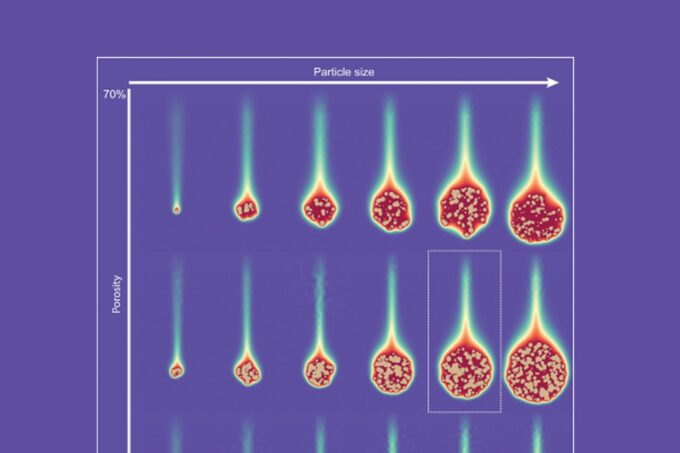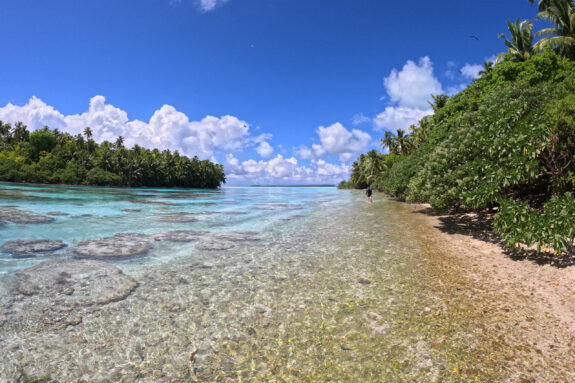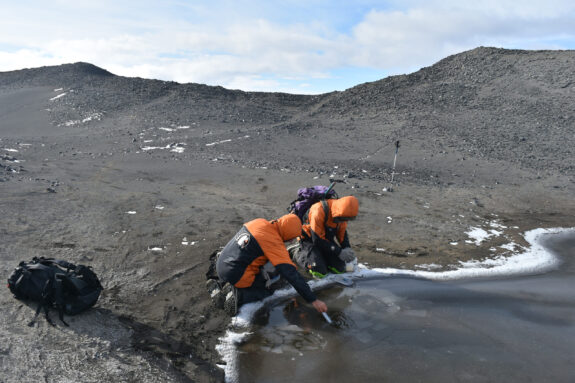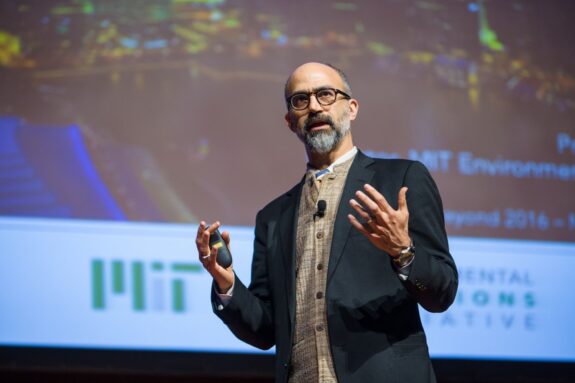To move or not to move?

An example of marine snow particles of various sizes and porosities falling at different speeds; visible behind them are the plumes of nutrients left behind as they travel. New research shows that the faster marine bacteria can react to incoming nutrients, the better chance they have at reaching it as it passes. Image courtesy the researchers
Phytoplankton living in the surface ocean create small particles that clump together until they become heavy enough to sink, earning these particles the name marine snow. They’re small, ranging from a few micrometers to millimeters in size, and are found anywhere phytoplankton thrive. But despite their small size, they’re a critical component in sequestering anthropogenic carbon dioxide emissions and serve as a vital source of nutrients for marine bacteria.
But for bacteria to eat it, they have to catch it. Marine snow “falls” at a rate that’s too fast for slow moving bacteria to chase after, which means they need early detection methods if they want to take advantage of it as it passes.
A new study published in PNAS Nexus from researchers in the Department of Earth, Atmospheric, and Planetary Sciences (EAPS) took a closer look at bacteria’s motility, or their ability to move, and how it gives them an advantage at colonizing marine snow particles.
“If you’re nonmotile you don’t get onto these particles; If you’re motile you do get on to them,” says Benedict Borer, a postdoctoral associate studying how microbial communities influence global biogeochemical cycles in the Bablab and coauthor of the paper. The paper was coauthored with Andrew Babbin and included contributions from Irene Zhang of MIT and Amy Baker and George O’Toole of Dartmouth.
Using one strain of bacteria, they mutated it into three different types: nonmotile, which can’t move at all; motile, which move randomly in different directions; and chemotactic, which use chemical sensors to determine which direction to move in. Borer compares chemotactic movement to smelling while blindfolded: they can pick up a “scent” and move where the scent gets stronger. Borer estimates that a large percentage of marine bacteria have some form of chemotaxis, making this a useful ability to measure.
They then used artificial marine snow and dropped it at different velocities to see how the bacteria moved at faster and faster speeds. Their findings were rather straightforward: the bacteria who were chemotactic had a higher advantage than those that were just motile, which did better than the nonmotile.
But then they took it a step further. While their experiments represented an ideal setting, it couldn’t completely model real world scenarios. Because it’s the aggregation of multiple particles, marine snow is often porous. Creating porous marine snow is difficult, so the lab ran simulations using their experimental data to see how the bacteria would fare.
They found that the porosity was beneficial to all the bacteria, even the nonmotile strains, because “there is more liquid getting to the particles, so it’s much easier for them to colonize,” Borer says. “It was great that we could validate the model using the experiments, and then also extrapolate the model to this these porous structures that we simply cannot do experimentally. There’s complementary value to the two.”
The findings are important because they not only validate previous findings that chemotaxis is an evolutionary advantage, but they also highlight different ways that bacteria can interact with marine snow particles on a micro scale beyond simply chasing after it; Borer believes that this is one of the first studies that shows how important porosity is for bacteria colonization. As marine snow falls, it also leaves behind a nutrient plume that bacteria can still utilize for food. The new findings raise further questions about what strategies bacteria should use to find nutrients and has inspired a few spin-off projects for the lab.
“Is it the life strategy to be nonmotile, and simply wait for marine snow particles to pass by you?” Borer asks. “That’s one of the questions that we would really like to explore.”


